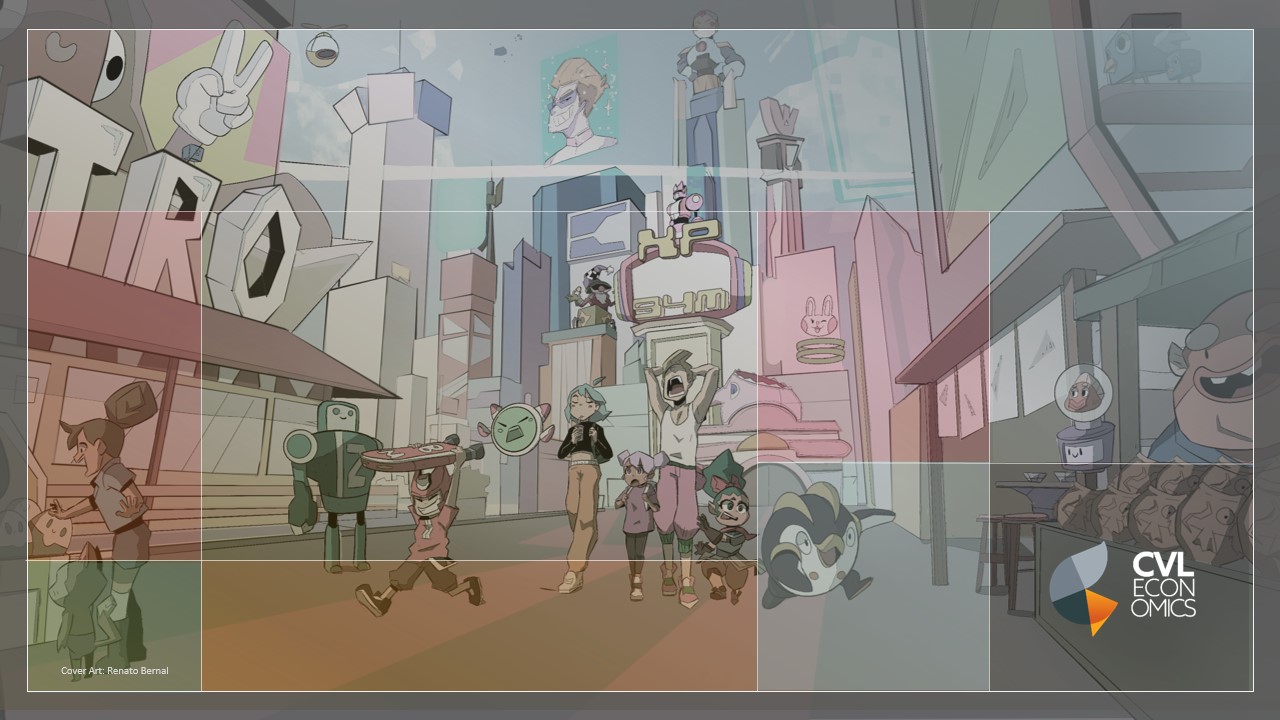Economic development strategies systematically overlook design innovation, missing opportunities that could transform regional competitiveness across industries. While policymakers chase the latest tech trends and offer traditional tax incentives, the $2 trillion global creative economy demonstrates a fundamental truth: design thinking creates sustainable competitive advantages that compound over time through multiplier effects and cross-sector innovation spillovers.
Recent research reveals that companies integrating design into their core operations achieve 32 percentage points higher revenue growth than industry benchmarks. Yet most economic development policies treat design as an afterthought—something for creative districts or cultural initiatives rather than a strategic economic tool. This represents a massive policy blind spot that forward-thinking regions can exploit for competitive advantage.
Design as Economic Infrastructure, Not Cultural Amenity
The most successful regional economies recognize design innovation as economic infrastructure rather than a cultural amenity. This paradigm shift transforms how policymakers approach industry development, workforce training, and business attraction strategies.
The opportunity scale becomes clear when examining design adoption across industries. Six major industrial sectors currently show under 13% design adoption rates, representing 925,000+ untapped companies nationwide. Even modest penetration increases in manufacturing, logistics, energy, or agricultural technology could create tens of thousands of new design-active businesses, fundamentally altering regional economic trajectories.
More striking is the sophistication gap among companies already engaging design. Research shows 75-94% of design-active companies remain stuck at basic styling levels rather than strategic design integration. This represents enormous untapped potential—companies treating design as superficial aesthetics rather than systematic innovation methodology. The economic implications are profound: regions helping businesses advance from styling to strategic design integration can capture premium market positioning and higher value-added activities.
Manufacturing provides the clearest example of this transformation potential. Traditional economic development focuses on operational efficiency and cost reduction. Design-integrated approaches recognize that manufacturing competitiveness increasingly depends on user experience, product differentiation, and rapid iteration capabilities. Companies applying design thinking to manufacturing report not just improved products, but enhanced innovation capabilities across their operations.
This cross-sector application explains why UK research shows 40% of creative employment occurs outside traditional creative sectors. Design skills permeate entire regional economies, creating what economists call "soft innovation"—changes in aesthetics, user experience, and symbolic meaning that generate significant economic value without requiring massive technological investment.
The Multiplier Effect: How Design Investments Cascade Through Economies
Economic impact studies reveal design investments generate powerful multiplier effects extending far beyond initial implementation. Each design-focused job typically creates 1.9-2.5 additional positions in regional economies. This occurs primarily through enhanced competitiveness rather than direct spending, making design-focused development particularly effective for sustained economic growth.
The small business opportunity amplifies these effects dramatically. Over 2.7 million micro-businesses currently don't engage in structured design, representing the largest single growth opportunity due to their sheer numbers. When small businesses adopt design methodologies, they typically require supporting services—from marketing and branding to specialized suppliers and technology platforms. This creates cascading demand throughout regional economies.
The mechanism operates through innovation spillovers and knowledge transfer. When manufacturers integrate design capabilities, they don't just improve their own products—they create demand for design services, advanced materials, and specialized equipment. Local suppliers upgrade their capabilities to meet higher standards. Educational institutions develop relevant programming. The entire regional ecosystem evolves toward higher value-added activities.
This cascading effect becomes self-reinforcing as regions develop design capabilities. Companies relocate to access design talent and collaborative networks. Entrepreneurs launch ventures that combine design with traditional industry knowledge. Regional specialization emerges around design-integrated manufacturing, services, or technology development.
Workforce Development: Bridging Design Innovation with Traditional Industries
The most promising opportunities lie in workforce development programs that integrate design thinking with traditional industry skills. These programs address a critical gap while capturing immediate revenue opportunities through resource optimization and capability building.
Current market analysis reveals that 60-76% of companies already engaging design lack proper resources or budgets for effective implementation. This represents immediate consulting and service opportunities through resource planning, capability assessments, and strategic design integration. Rather than searching for new markets, economic development practitioners can help existing businesses optimize their design investments for better outcomes.
Policy Frameworks: Why Most Regions Miss the Opportunity
Comparative analysis reveals why some regions successfully integrate design into economic development while others struggle. The challenge isn't lack of opportunity—with nearly 3 million businesses representing untapped design potential—but rather institutional frameworks that fail to recognize and capture these opportunities systematically.
Successful approaches share several characteristics: institutional coordination across agencies, measurement systems that capture design's economic impact, and policy frameworks that recognize design as strategic infrastructure rather than cultural programming. The UK's Design Council model provides institutional infrastructure that most regions lack, coordinating across government departments while maintaining comprehensive measurement systems tracking both economic and social impact.
South Korea's integration of design thinking into national competitiveness strategies has achieved remarkable results, ranking first in Bloomberg's Innovation Index while building globally competitive positions in design-intensive industries. Their approach focuses on moving companies up the design sophistication curve rather than simply increasing adoption rates.
Unsuccessful cases reveal common pitfalls: fragmented management across agencies, over-emphasis on traditional creative industries, and lack of integration with broader economic development goals. These failures highlight the importance of comprehensive institutional design rather than ad hoc program implementation.
The Strategic Opportunity: Design-Driven Industrial Transformation
Current economic transitions create unprecedented opportunities for design-integrated development strategies. The green economy requires fundamental rethinking of products, services, and systems—exactly the type of challenge where design thinking excels. Advanced manufacturing increasingly depends on user experience and rapid customization capabilities. Digital transformation demands human-centered approaches to technology implementation.
The market data reveals the scale of this opportunity: nearly one million companies across six major industries await design integration, while millions more could advance from basic to strategic design implementation. For economic development practitioners, this represents a massive untapped market that can drive regional transformation without requiring massive infrastructure investments or industrial recruitment campaigns.
Regions that develop comprehensive design capabilities while integrating them with traditional industries will capture disproportionate shares of future growth. This requires moving beyond traditional approaches focused on creative districts or cultural industries toward systematic integration of design thinking across economic development strategies.
The evidence is overwhelming: design-focused economic development creates sustainable competitive advantages that compound over time. The question for policymakers is not whether to embrace design-driven approaches, but how quickly they can build the institutional capabilities and strategic frameworks necessary for implementation. Those who act decisively will shape the next generation of regional economic competition.
RELATED CONTENT






